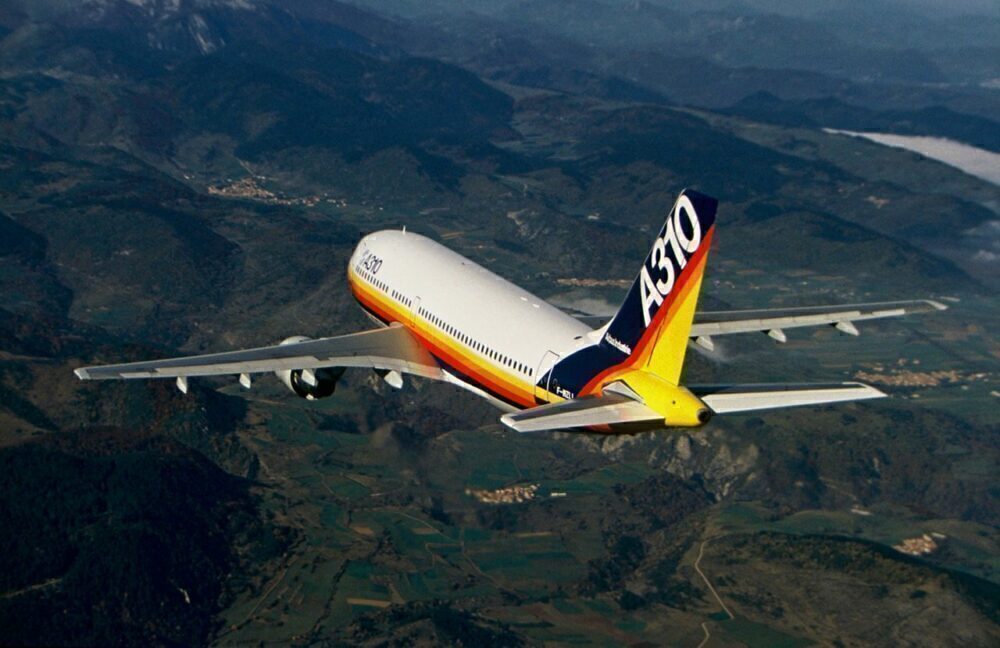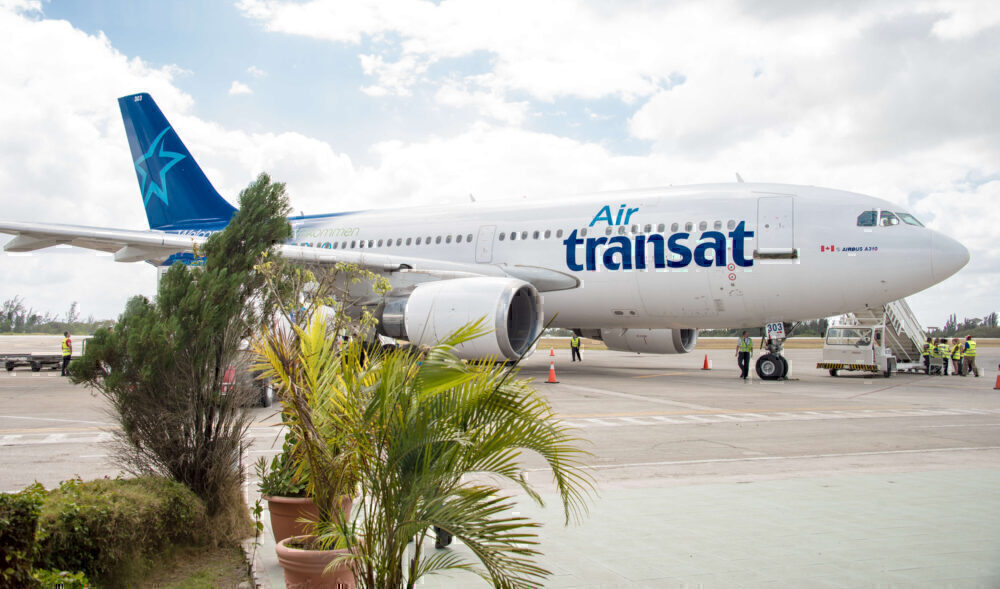A decade after the Airbus A300 had hit the skies for the first time, another twinjet, the A310, conducted its first flight. This widebody is smaller than its older sibling and was created to meet particular market demands at the time. However, despite the initial prospects, the aircraft’s production program ended within 17 years. Let’s take a look at the decline of the type.

A specific requirement
The A300 broke great ground following its introduction with Air France in October 1972. Many operators appreciated the high-capacity powerhouse on long-haul operations. Nevertheless, some airlines were looking for a slightly smaller solution in favor of increased frequencies.
Airbus highlight’s that the A310 was produced with a 222-inch fuselage cross-section, which was the widest in its segment. This factor allows plenty of room and comfort for passengers on long-haul trips. Moreover, the cabin was set up with plenty of flexibility, allowing accommodation for between 190 and 230 travelers in a typical three-class layout. Airlines made the most out of the ease of modification and configured their interiors well to suit their needs.
The manufacturer also promoted efficiency advantages, sharing that the two engine options – General Electric’s CF6-80C2 and Pratt & Whitney’s PW4000 provided a drop in fuel burn alongside lower noise levels and CO2 emissions.
The A310 was entered into service in April 1983 with Swissair and competed with the Boeing 767-200, which commenced operations six months earlier. The plane’s longer range and ETOPS regulations made it a great solution for transatlantic flights. Overall, during the course of its production, the jet received 225 orders.

The production run
Six variants of the type were designed. The initial development was the -200, which allowed for the -300 to then be produced, which had better range and became the flagship in the series.
The -200C and -300C were convertible models while the -200F and 300F were cargo specialists. Meanwhile, the A310 MRT/MRTT is a -300C derivative. The -100 was a shorter concept that was never actually produced.
Production formally ended in June 1998, which is notably nine years before the end of the A300 program, despite the A310 being a younger model. The newer plane didn’t sell as well as its predecessor, but taking into all the factors, the difference wasn’t great. 561 A300s were ordered, which is more than double the total sales of the A300. However, when looking at the production run of both planes, the yearly average isn’t so significant, with the A300 averaging 15.5 units a year and the A310 averaging 13.5 units.
Nonetheless, in their operating prime, there was a clear difference. Most A310 deliveries were following on from orders placed before its introduction. Then in 1994, there was a significant issue as the plane received no orders in the whole year.
The aircraft was just floating about in the market for the rest of the decade with little interest for new orders. As a result, production slowed down to just two units each year.

New players in the game
At the beginning of the 1990s, Airbus introduced the A330 and the A340. These two planes caused a shift in the European planemaking industry and the A330 especially had a direct impact on the A300/A310 program. It was an inspiration from the original twinjet widebody family and was a massive success following its introduction. To date, over 1,500 units have been built and is still deployed by several operators across the globe. With the A310 being a middle-of-the-market solution, even the A320 family’s rise hindered popularity.
Therefore, with airlines preferring to order a more modern twinjet widebody from Airbus, it was only natural that older models would fade out. The A310’s tough middle-market positioning allowed it to suffer more rapidly than the A300. So, the program was shut down in 1998.

End of an era
Regardless, the A300 would also eventually cease production just under a decade later. Airbus publicly announced the final assembly of the A300/A310 program in March 2006. Gustav Humbert, Airbus’ president and CEO at the time said that it is in Airbus’ best business interest to optimize the use of its resources. Nonetheless, he emphasized how important the aircraft have been over the decades.
“We are implementing a major production ramp-up across our business as the A300/A310 programme nears completion. This is in response to growing demand from our customers for the newer Airbus products like the A321, the A330/A340 family and the new A350 aircraft, that cover or even go beyond the market segment of our original aircraft programme,” Humbert shared in a statement in 2006.
“The A300/A310 programme launched the Airbus success story and with a total of 821 orders it has surpassed all commercial expectations. The spirit behind the A300/ 310 continues into the 21st century, most recently with the A380 and the A350 programmes. I wish to express my sincere thanks and gratitude to all customers and all Airbus employees who have participated over the years in designing, developing, marketing and building these exceptional aircraft.”

The situation today
Amid the end of production, Airbus expressed that the A310 would continue its operational life for many years with many members of the global fleet expected to still be in operation beyond 2025. However, today, only a handful of commercial airlines operate the type.
In the passenger realm, Ariana Afghan Airlines, Iran Air, Mahan Air, and Taban Air hold the plane. Meanwhile, Royal Jordanian Cargo and Turkish Cargo fly the plane on shipping operations. The rest of the holders are largely military operators.

Stay informed: Sign up for our daily and weekly aviation news digests!
Altogether, the landscape of the 1990s is largely different to what it is now. Point to point flying has garnered great popularity in recent years, with smaller airports across the globe seeing the arrival of medium-sized widebody twinjets. Jumbo powerhouses are increasingly becoming a thing of the past and manufacturers have been looking at new mid-market solutions. So, had the model been introduced with updated technology in a later climate, the program may have lasted longer.
What are your thoughts about the Airbus A310? Have you ever flown on the aircraft over the years? Let us know what you think of the plane in the comment section.
[ad_2]
Source link


